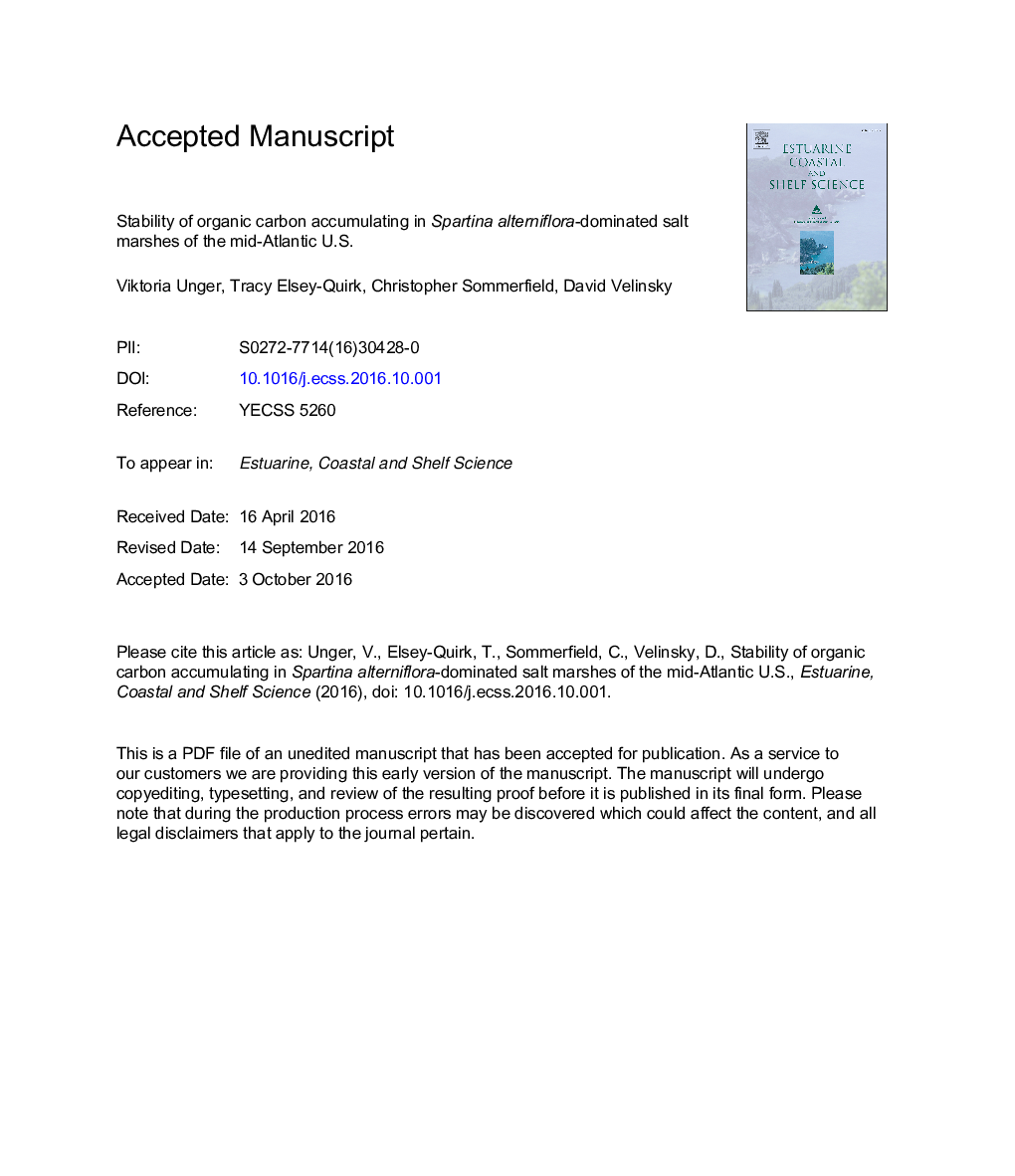| Article ID | Journal | Published Year | Pages | File Type |
|---|---|---|---|---|
| 6384460 | Estuarine, Coastal and Shelf Science | 2016 | 40 Pages |
Abstract
Organic carbon sequestration in salt marsh soils is a function of factors that influence both spatial variability and chemical stability of accumulating carbon. Refractory carbon (slowly decomposed) may be the most important in terms of long-term sequestration and is widely referred to in models of carbon storage; however, little information exists about the quantity and variability of refractory carbon accumulation in marshes. In this study, total (CT), labile (CL) and refractory (CR) organic carbon accumulation rates were measured for Spartina alterniflora-dominated marshes representing different geomorphological settings with a range of vertical accretion rates. Three 50-cm long cores were collected in each of three marshes in Barnegat Bay and three marshes in Delaware Estuary, USA. Rates of C accumulation were calculated using Cesium-137 dating and the relative stability of soil organic carbon was quantified using acid-hydrolysis. CT accumulation ranged over fourfold among marshes from 72 to 346 g mâ2 yrâ1. CT and CL accumulation increased with increasing mineral sediment accumulation, while CR accumulation was uniform across cores averaging 78 ± 5 g mâ2 yrâ1. Similar rates of CR accumulation across marsh areas with different accretion and mineral sediment accumulation rates was associated with a decline in the CR:CL density ratio as mineral volume increased. Our results suggest that carbon accumulation is higher in salt marshes with higher mineral sedimentation due, primarily, to the burial of labile carbon, and that there is a limit on the rate of chemically recalcitrant carbon accumulation in marsh soils.
Related Topics
Physical Sciences and Engineering
Earth and Planetary Sciences
Geology
Authors
Viktoria Unger, Tracy Elsey-Quirk, Christopher Sommerfield, David Velinsky,
